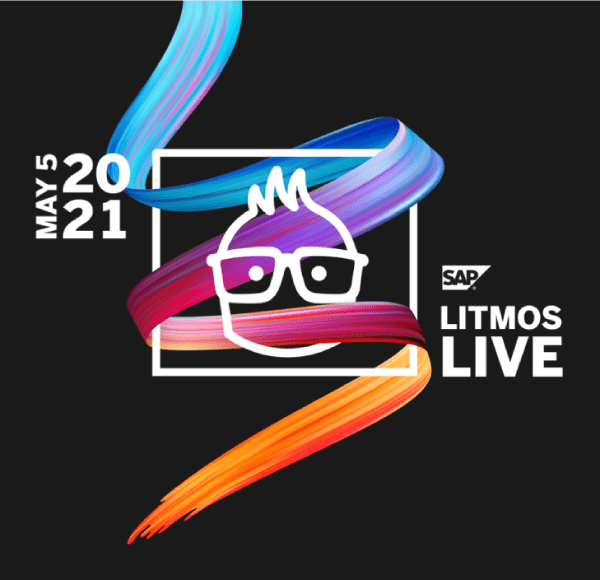Is Content Curation the Future of Instructional Design?
Curation is a trending topic getting a lot of attention in the training and learning and development industry. But why? What’s happening in business, which makes some believe curation is a problem? Is the training department best suited to solve this perceived problem? Even if you’re in a large Fortune 500 enterprise with the luxury of a Learning and Development department, do you really see content curation as part of curriculum design, management leadership development, onboarding, sales training, etc.? Is anyone else doing it? Have we done enough investigation to truly understand curation, before we declare it the future of the instructional designer?
When asking myself these questions the first place I check is trends.google.com. It’s a great source of data that starts to build a story around what I’m trying to understand. Since it mainly displays a timeline of interest via search term data, we find terms either growing or dying and what point in time it has occurred. It paints an interesting picture of this fascinating topic. In 2010, according to Google trends,the term curation began to see significantly more interest, which seems on par considering the state of technology at the time, and my own experiences using tools like Flipboard, which launched in 2010.
What Other Professions Curate Content?
Do other jobs exist that include curating content? A librarian comes to mind. Technology has had an incredible effect on libraries around the world. If you thought the internet would turn libraries into empty useless buildings and if you thought the job of a librarian was a dying career, both statements couldn’t be further from the truth. Throughout time, it’s been the librarian who has mastered the art of content curation. They simply shifted their focus from physical content to digital content. Of course the disruption of the library and the librarian is much more complex, but not necessary to discuss in detail here. The important point is that there is an industry of professionals who already do curation.
Here is a small part of the wikipedia entry for Library Science:
“The digital age has transformed how information is accessed and retrieved. “The library is now a part of a complex and dynamic educational, recreational, and informational infrastructure.”[15] Mobile devices and applications with wireless networking, high-speed computers and networks, and the computing cloud have deeply impacted and developed information science and information services.[16] The evolution of the library sciences maintains its mission of access equity and community space, as well as, the new means for information retrieval called Information Literacy Skills. All catalogues, databases, and a growing number of books are all available on the Internet. In addition, the expanding free access to open source journals and sources such as Wikipedia have fundamentally impacted how information is accessed. Information literacy is the ability to “determine the extent of information needed, access the needed information effectively and efficiently, evaluate information and its sources critically, incorporate selected information into one’s knowledge base, use information effectively to accomplish a specific purpose, and understand the economic, legal, and social issues surrounding the use of information, and access and use information ethically and legally.”[17]
I think librarians are an important focus because they seem to be the universal link when attempting to explain curation. However, it’s a bit more complicated than that. There is content curation, digital curation, data curation, as well as the same term, which may be slightly redefined depending on your industry. For example: Content Marketing professionals use content curation as a form content production/sharing/delivery of other people’s content, but for their own benefit. Similarly, learning professionals gather other people’s content into lists and call that curation. IT departments talk about digital curation and data curation as part of analyzing “big data”. However, it is the librarian and the museum curator that help people understand the idea of curation.
Why Did Curation Become Necessary?
Are you overwhelmed by the internet? Have you suffered from information overload? I’m sure it doesn’t take you long to answer either question and you most likely answered yes to both. If you answered no to either question, or both, then you probably already have tools and processes in place to manage the information firehose.
If you look back before the internet, you see the work of teachers as curators. Publishers and authors curated and organized content into books, and teachers organized the content of those books into lessons. Good teachers knew how to curate the best content for their students and make it a meaningful tool for learning. If you think about it, content curation has always been at the core of education and teaching. The best teachers discover the best content most appropriate for their class and present it effectively. Curation is not new, in fact, I would argue that curation has been always been part of the instructional design process.
Maybe the internet changed things. Perhaps digital content curation is different. Let’s take a step back and understand how this happened. During the early days of the World Wide Web, creating content was mainly the job of the tech elite, the alpha geeks. It certainly wasn’t difficult to create HTML pages, but most people simply didn’t even know to do it, or that HTML pages even existed. This was Web1.0 and by today’s standards, it had very little content. Most of the “good” content could be listed, or human-curated, in the Internet Yellow Pages or other books of that time. Yes, actual books. We may giggle at this today, but it’s common for old technologies and processes to be applied to new innovations. Because that’s all we knew. Few people ever dreamed that today’s volume of content would even be possible. So why not just list the internet pages alphabetically in a book like we did with names and phone numbers?
Then we saw the World wide Web become the Internet, and early digital curation came in the form of search engines. Typing in a word or phrase and getting a list of related content was like magic back then. As technology matured and web technology allowed people browsing the web to input data,this allowed for even more content. The transition took about a decade, but over time the web browser changed from a simple viewer of content to a content creation platform. This was Web2.0 and the amount of content added to the internet grew exponentially.
The massive amount of content made it difficult for even the best search engines to figure out exactly what you need. Even today, search engines are not perfect, often times the results at the top hits are ones that a company paid in order to be displayed first. That’s okay because Web2.0 also brought us social networking and online communities that could rank and rate content. If you had enough people consuming the same content you could “crowdsource” the value of the content. Through the online actions of the collective, it became easier for the technology to understand what content was popular, and useful, or not. Is this curation?
Curation and The Instructional Designer
What curation means to the instructional designer is still not clear. As individual learners, we all have unique processes for gathering the content we consume. These are skills we’ve learned over time, and when we share content we become part of a much larger curation process. But this still doesn’t explain how an ID would apply curation differently to their work.
If we are talking about building instruction about digital literacy then the instructional designers work is clear: Build instruction that improves digital literacy so employees can:
“determine the extent of information needed, access the needed information effectively and efficiently, evaluate information and its sources critically, incorporate selected information into one’s knowledge base, use information effectively to accomplish a specific purpose, and understand the economic, legal, and social issues surrounding the use of information, and access and use information ethically and legally.” (from wikipedia text above)
However, if the desire to use curation as part of the instructional design process, or a larger vision of curation as part of creating a learning culture, then we have more work to do.
As mentioned above, the driving force of curation is the existence of content. Human curation seems to work best when the amount of content reaches a critical mass where no one system or person can effectively manage it. The size of the Internet forced us to find better methods of discovering content and trusting individuals in our networks is a natural solution. It’s what we did before the Internet existed. Before any curation is necessary, you must start with content and that content must be accessible.
When you walked into a library, you asked the librarian for help finding what you’re looking for. When you’re at work you ask your peers questions and they either give you an answer or show you where you can find the answer, or both. When we create content for training, we engage with subject matter experts and collect, or curate, all the content we can find. We then add value by organizing and presenting the most appropriate content in the most effective format. It would seem that we already curate as part of the instructional design process. It’s important to remember that not all Internet curated content is peer reviewed, authored by subject matter experts and proved or disproved, sometimes it’s just subjugated opinion. Know your source, get a second opinion, and do your own research. The Internet contains a lot of misinformation, so proceed with caution. Happy surfing!
I’d love to get your opinions on curation as it relates to instructional design. Please let me know if you write about it or comment on social media.
Special thanks to those colleagues who have engaged with me on this topic via twitter:
- Tricia Ransom @triciaransom
- Shannon Tipton @stipton
- Andrew Jacobs @AndrewJacobsLD
- Gina Minks @gminks
- Matthew Hoyt @matthewLhoyt
- Steven Potratz @stevenpotratz
- JD Dillon @JD_Dillon
- Megan Torrance @MMTorrance






